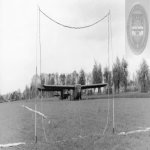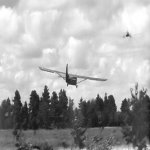
A Swiss Army Panzer 68 hull being heat treated in an oil bath, at an Eidgenoessische Konstruktionswerkstaette facility in Thun, Switzerland, 1977.
That seems bad for the climate.

A Swiss Army Panzer 68 hull being heat treated in an oil bath, at an Eidgenoessische Konstruktionswerkstaette facility in Thun, Switzerland, 1977.

A Swiss Army Panzer 68 hull being heat treated in an oil bath, at an Eidgenoessische Konstruktionswerkstaette facility in Thun, Switzerland, 1977.



Making tools of war is an expensive business. Thankfully, governments always seem ready to pay however much of the people's tax dollars to cover the costs. "War is a racket" said Smedley Butler, and one can't help but see some truth in that.
Anyhoo, imagine dropping into Occupied Europe aboard a glider. Took balls, that did.

Gotta say, though - the Hotspur was a pretty bird.
Making tools of war is an expensive business. Thankfully, governments always seem ready to pay however much of the people's tax dollars to cover the costs. "War is a racket" said Smedley Butler, and one can't help but see some truth in that.
Anyhoo, imagine dropping into Occupied Europe aboard a glider. Took balls, that did.
Gotta say, though - the Hotspur was a pretty bird.

Anyhoo, imagine dropping into Occupied Europe aboard a glider. Took balls, that did.


(It appears that the guy who wrote that is not an English speaker)Notes by a French gunner Sherman for the use of the APC M61 75mm bullet against German tanks.

On the hunt for company in Mavinga

"Ricardo J. Alves
The so isolated MAVINGA municipality in the province of k.k. very few know it today. Few dare to take the Cuito canal route MAVINGA."
(It appears that the guy who wrote that is not an English speaker)














































